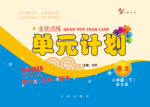题目内容
Having decided to rent a flat, we ________ contacting all the accommodation agencies in the city .
A. set about B. set down C. set out D. set up
A

 全优点练单元计划系列答案
全优点练单元计划系列答案Treatment for HIV has become more widespread, especially in poorer countries. It's also become cheaper, as medicine companies have lowered their prices for life-saving anti-retroviral drugs(抗逆转录病毒药物). But these drugs are still expensive and many countries are looking to create the biggest impact with limited resources. That's where World Health Organization guidelines come in, says Rochelle Walensky, a disease researcher from Harvard.
Walensky and her colleagues used computer programs to model the most cost-effective disease interventions(干预), as well as collected data from clinics in Africa and India about what works best. They found that among the choices of what to do first, earlier anti-retroviral therapy (疗法)improved five-year survival dramatically and resulted in the longer life expectancy. But cost-effective doesn't always mean affordable, especially for governments in poor countries. Countries still have to make difficult choices about how much treatment they can afford.
People in Nairobi, Kenya on Thursday, Dec. 9, 2010, protest a potential free trade area agreement between the EU and India that could see cheap anti-AIDS drugs phased out(逐步淘汰). However, Walensky notes that first-line anti-retrovirals—those medicine given to newly diagnosed patients that can keep away from symptoms for years - are much cheaper than they were a decade ago. "Second-line therapy have come down quite a bit but not to the level of first-line and countries are having a hard time affording them and increasingly over time, people are going to fail first-line therapy and they're going second-line therapy and then, eventually, they're going to need third-line therapy, some of them."
According to Walensky, history has shown that drug prices can come down when international pressure is applied to drug makers. But for now, she says, countries should focus on treating as many people as they can, as early as possible
Her paper is published in the online journal PLoS Medicine.
【小题1】 Which is the best title for the passage?
| A.HIV Has Spread in Poorer Countries |
| B.Rochelle Walensky’s Life |
| C.International Pressure to Drug Makers |
| D.Early HIV Treatment Saves Lives |
| A.Anti-retroviral drugs have become cheap now. |
| B.The cost-effective treatment may be a heavy expense. |
| C.Cheap anti-AIDS drugs have been phased out . |
| D.First-line therapy deals with the most severe disease. |
| A.using computer programs and collecting data from clinics |
| B.giving medicine to newly diagnosed patients with AIDS |
| C.urging countries to focus on treating more patients earlier |
| D.publishing her paper in the online journal PLoS Medicine |
| A.assessment | B.comment | C.introduction | D.background |